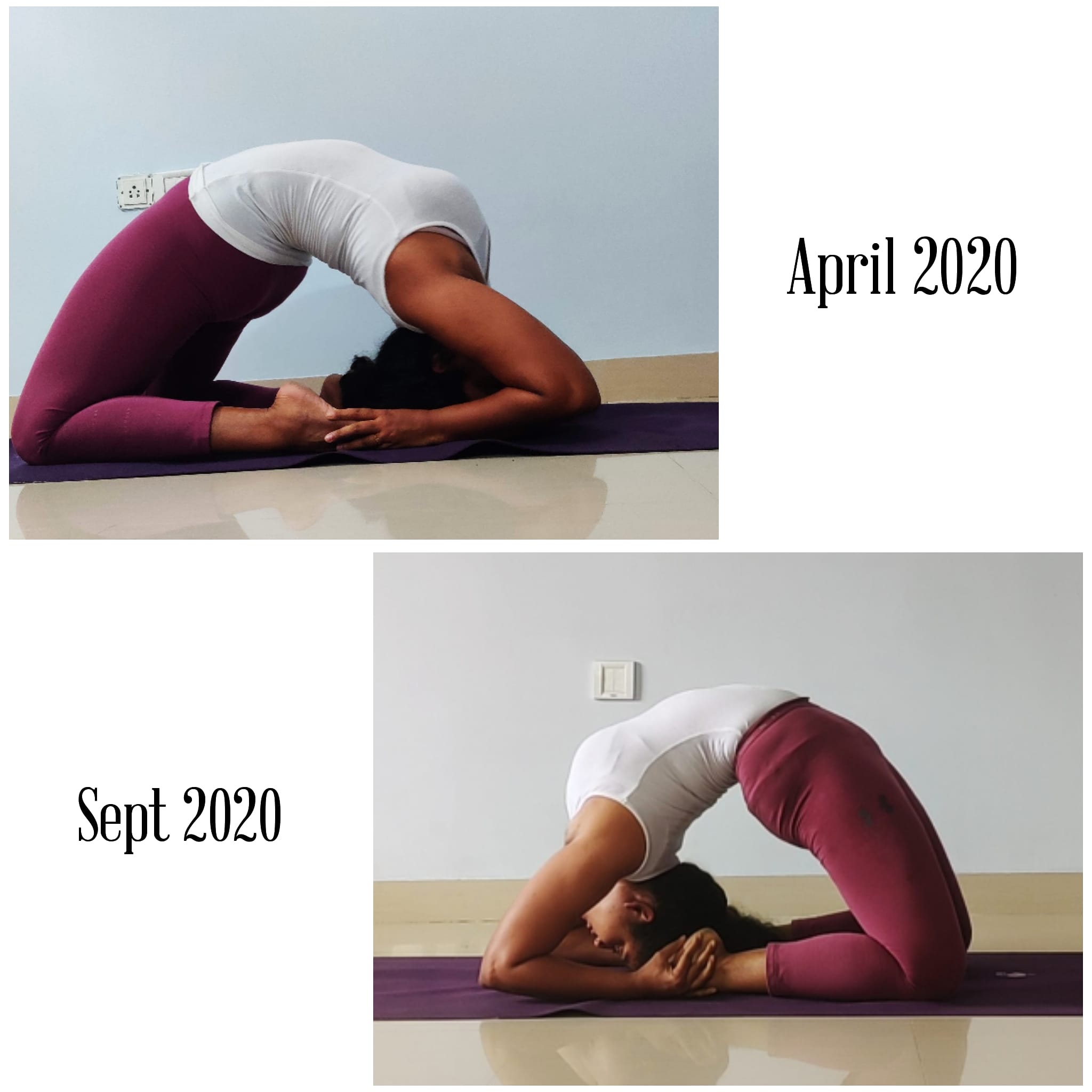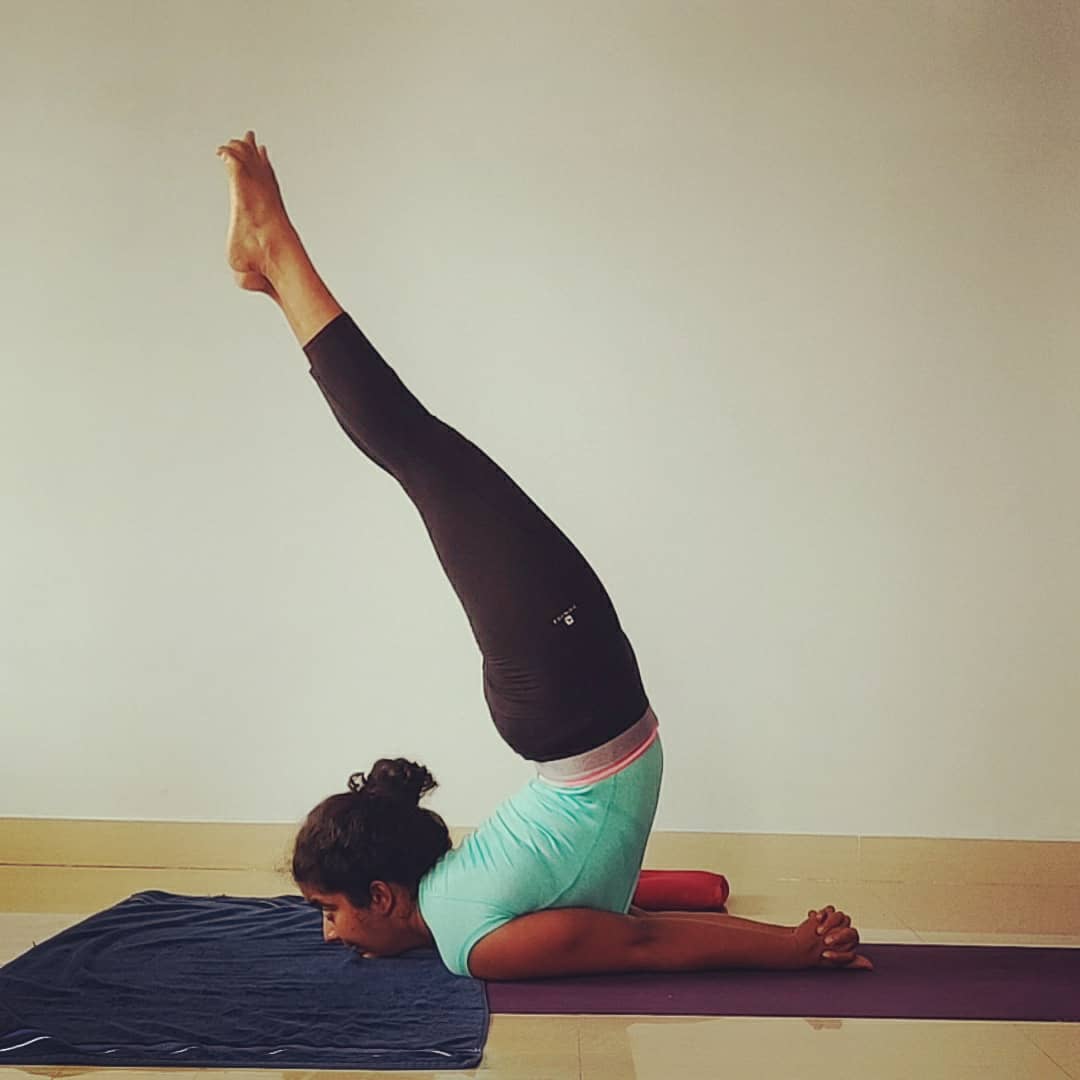(Aswathy Manoharan is a Yoga Teacher at Aayana Yoga Academy, based in Bangalore. She shares her insights she has developed while being under a Yoga Teacher Mentorship)
One of the highlights of this year has been the time that I have dedicated everyday for my self practice. I want to share about my self practice because it has tremendously improved my confidence, helped me understand my body, my mental patterns, and changed my way of teaching.
A very common pattern among new yoga teachers is that when the number of classes increases, their self practice takes a back seat. You have no energy left. You are too tired to do your practice. I have taught many classes without doing my own practice and felt like a hypocrite. I have been teaching for the past few years but I did not have the motivation or the discipline that I needed to do my practice on a daily basis. I would follow random yoga videos on YouTube or attend my teacherís classes once in a blue moon. I had heard my own teachers say that your original ideas only come when you step on your mat. I was not a very receptive student at that time so that advice just went in one ear and out the other. After developing the self-discipline to do my daily self practice, I am grateful that I have it and I believe that it is here for life.†
In April 2020, I joined a mentorship program led by Regeesh Vattakandy from Aayana Yoga Academy. This is when I noticed a shift in my approach towards self practice. The mentorship programme is changing my attitude towards work and life. As part of the programme, we have to do our self practice and that is where it all started. I used to practice yoga on my own a few times a week last year but my approach was very different. I only practiced when I was in the mood. I also did not set any goals for my practice. What changed was that the mentorship program pushed me to do my practice even on the days I was not in the mood. I moved from practicing when I was in the mood, to practicing everyday and let the mood get created during the practice. The initial three months were challenging. I would practice one day; the next day I am so content and sore that I would skip my practice. I realized that this was my pattern. By the end of three months the habit of self practice was set and most of the days I woke up looking forward to what I want to explore in my practice that day. I had set clear goals to my practice so that gave a direction to my practice. I was no longer stepping on the mat and wondering what to do. To sum it up, having set clear goals and creating a habit of self practice is what worked for me.†

My self practice
I have a set pattern for my practice. There are certain asanas that I do everyday and the rest of the practice is dependent on what my students need, or working towards improving my strength, flexibility or awareness. Initially, I used to feel guilty if I did not have an intense practice all six days. I would feel like I wasn't doing enough. Now I have understood that there will be days when you can really push your limits and days where you just turn up on your mat and do as much as can. What matters is that you step on your mat. Recently, after getting valuable advice from a physiotherapist, I have been exploring deep backbends. I am able to do some asanas which I never imagined myself doing. However, that isnít my practice everyday. There are days when I would choose asanas that are within my comfortable range of movement. For example, I would hold a trikonasana and just focus on my breath. You have to listen to your body and tweek your practice at times. For example, I like to do restorative practice on the first day of my period. It helps me ease the cramps and calm my mind.†
What I learned from my self practice
I used to watch a lot of YouTube videos earlier. I would try them out and teach it in class. In hindsight, I realize that it was like bringing bits of information from here and there into my teaching. It wasnít my own understanding. When you do your self practice, you have to feel your body, explore what works for you in each asana. I do chakrasana almost everyday. If you look up online you can find numerous videos on how to do it, your body alignment, and a variety of information. When I started doing chakrasana everyday and paid attention to what I was experiencing while doing it, I started finding small adjustments that made it more efficient. I learned what worked for me. When I taught it in class, different bodies responded differently. Some students could easily lift themselves up, but found it challenging to hold the pose. Some students couldnít lift themselves up into the pose. Then I started exploring the same asana with the intention of making it accessible for people with different bodies. I was no longer teaching the new things I learned from random videos.†
During the beginning of this lockdown, I attended Mrinali Madhukarís (my teacher) classes religiously. The classes were so good, I began to teach the same in my classes. I didn't even have to use my brain to teach my students. It was like instant noodles. The classes really taught me how to be a teacher but I realized that I had to use my own brain. Through self practice I discovered how to unlock certain asanas. It gave me the confidence that I could figure things out on my own. When I taught my classes, I was no longer giving random information. I began to share only what I experienced on my mat; what I was thoroughly convinced about. I started sharing my own understanding of what I was learning each day.†

How to start your self practice
1. Choose a time and place :If you are teaching classes in the morning and evening, an hour before lunch is a good time.†
2. Start with 20 minutes of practice. Gradually increase the amount of time you practice. What limits most of us is† the misconception that we need a lot of time to practice.†
3. Commit to practicing 6 times a week. One day is for rest.†
4. Set goals every month. You may end up choosing 10 things to work on. This is where you have to narrow it down to two or three asanas. Now your practice will be oriented towards achieving these asanas.†
5. Make sure you have a proper warm up, cool down and relaxation.
6. There will be days your body will be sore and your mind will ask you to take rest. Donít listen to your mind when it makes excuses. Start with easy stretches, once the body starts moving and the blood flows the soreness will go away. Once the body starts moving, your mind will be motivated to practice.†
7. After a few weeks your mind may come up with more excuses. Again, DO. NOT. LISTEN!†
8. When you feel demotivated, listen to motivational videos on YouTube. Personally, I like listening to Arnod Schwarzeneggerís videos on Youtube. You will feel like your father scolded you and you will step on your mat. Trust me!†
Self practice is all about creating a habit. Once you get through the initial months of struggle, your self practice will start rewarding you. It will be the space where you learn, get insights, and feel content.†
I am truly grateful for having developed the discipline of self practice and I am looking forward to discovering more through my practice.†




